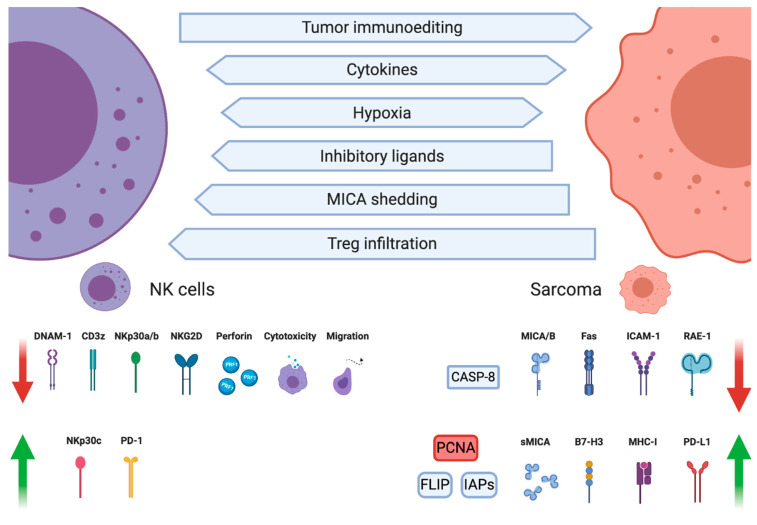Figure 2.
Interactions between natural killer (NK) cells, cancer cells, and tumor microenvironment (TME) shape sarcomas’ immunoevasion mechanisms. Tumor immunoediting, cytokines, hypoxia, and cells infiltrating the TME can change the sarcomas cell phenotype into an NK cell-resistant one, characterized by decreased expression of NK cell-activating ligands MHC class I-related chain A/B (MICA/B), retinoic acid early transcript 1 (RAE-1), intercellular adhesion molecule 1 (ICAM-1), and proteins necessary for Fas ligand (FasL)-mediated apoptosis (Fas, caspase-8). Conversely, expression of inhibitory molecules such as major histocompatibility complex (MHC) class I, programmed cell death ligand 1 (PD-L1), B7-H3 (CD276), proliferating cell nuclear antigen (PCNA), and antiapoptotic proteins cellular FLICE-inhibitory protein (c-FLIP), as well as inhibitors of apoptosis (IAPs), is increased. NK cell phenotype and function are also altered in the sarcoma TME by cytokines, hypoxia, and inhibitory ligands, resulting in a disturbed balance between activating and inhibitory receptor expression and associated cytotoxicity impairment. Created with BioRender.com.

